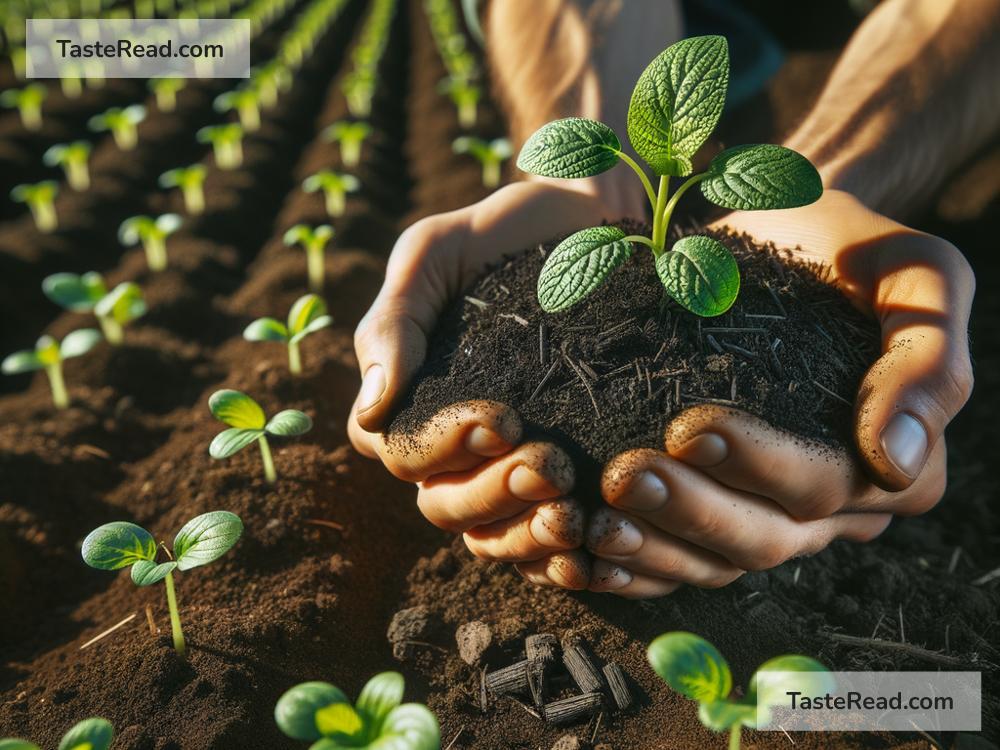Exploring the Role of Biochar in Regenerative Agriculture: A Simple Guide
In recent years, there’s been a lot of buzz around a technique called regenerative agriculture. This approach focuses on restoring the health of our planet’s soil, which has been steadily declining due to over-use, chemical inputs, and other harmful farming practices. Regenerative agriculture involves various methods designed to improve soil health, increase biodiversity, and combat climate change. One exciting tool in this regenerative toolkit is something called biochar. But what exactly is biochar, and how does it play a role in regenerative agriculture? Let’s dive in and keep things simple.
What is Biochar?
Imagine you have a piece of wood or some plant matter. Now, if you burn this material in a very high-heat environment with very little oxygen, you’ll end up with biochar. It looks a bit like charcoal, but it’s used for a different purpose. Unlike charcoal, which is typically burned for heat, biochar is mixed into soil. This dark, porous material has been used for centuries to improve soil health and crop yields.
Why Use Biochar?
The benefits of biochar are numerous, making it a valuable asset in regenerative agriculture. Here’s why it’s gaining attention:
- Improves Soil Health: Biochar can enhance soil quality in several ways. It can increase soil fertility, retain moisture, and adjust the soil’s pH levels, making it more hospitable for plants.
- Boosts Crop Yields: Healthier soil leads to stronger, more resilient plants. Farmers using biochar have reported better crop yields, which is essential for feeding a growing global population.
- Sequesters Carbon: Biochar is essentially carbon. By mixing it into the soil, we’re effectively removing carbon dioxide from the atmosphere and storing it in the ground. This process helps combat climate change.
- Reduces Need for Chemical Inputs: With biochar improving soil health naturally, there’s less need for chemical fertilizers and pesticides. This shift can decrease pollution and harm to beneficial soil organisms.
How Biochar Fits into Regenerative Agriculture
Regenerative agriculture is all about healing the planet, one farm at a time. Incorporating biochar into farming practices can accelerate this healing process. Let’s explore how:
- Soil Restoration: By enriching the soil with biochar, we can kick-start the restoration of degraded lands. This improvement in soil health is the cornerstone of regenerative agriculture.
- Water Conservation: In areas prone to drought, biochar can be a game-changer. Its ability to retain water helps reduce the need for frequent irrigation, conserving precious water resources.
- Sustainable Farming Practices: Biochar supports sustainable farming by reducing reliance on chemical inputs and promoting natural growth processes. This adherence to nature’s rhythms is at the heart of regenerative agriculture.
- Climate Change Mitigation: As we’ve seen, biochar can store huge amounts of carbon for extended periods. This capacity makes it a powerful tool in the fight against climate change, a critical component of regenerative practices.
Overcoming Challenges
Despite its benefits, the widespread adoption of biochar in regenerative agriculture faces challenges. The production and application of biochar need to be scaled efficiently and affordably. Farmers and land managers must be educated on its benefits and taught how to use it effectively. Research and innovation are crucial to overcoming these obstacles and maximizing biochar’s potential in regenerative systems.
Embracing the Future
The role of biochar in regenerative agriculture is promising but requires commitment from all stakeholders, including farmers, policymakers, researchers, and consumers. By supporting sustainable practices and advocating for regenerative techniques like biochar use, we can all contribute to a healthier planet.
In summary, biochar represents a bridge between ancient wisdom and modern science—a tool that not only revives the soil but also addresses broader environmental issues. As we come to better understand and apply this material within the context of regenerative agriculture, we could see significant shifts towards sustainability in our global food systems. The journey towards regenerative agriculture is a collective one, and biochar is undoubtedly a key step on the path to healing our planet’s soils and, by extension, our environment.


